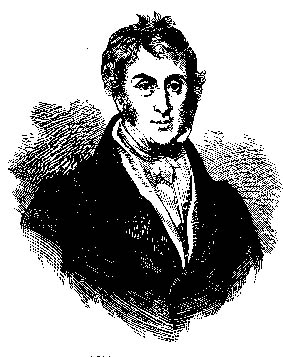Mountstuart Elphinstone
Mountstuart Elphinstone (October 6, 1779 – November 20, 1859) was a Scottish statesman and historian, associated with the government of British India. He later became the Governor of Bombay (now Mumbai) where he is credited with the opening of several educational institutions accessible to the Indian population. Besides being a noted administrator, he wrote books on India and Afghanistan.
Early life
Born in Dumbarton, Dumbartonshire (now Dunbartonshire) in 1779, and educated at the Royal High School, Edinburgh, he was the fourth son of the 11th Baron Elphinstone in the peerage of Scotland. Having been appointed to the civil service of the British East India Company, of which one of his uncles was a director, he arrived at Calcutta early in 1796 where he filled several subordinate posts. In 1801, he escaped massacre in Benares (now Varanasi) by the followers of the deposed Wajid Ali Shah. Later that year he was transferred to the Diplomatic Service where he was posted as the assistant to the British resident at the court of the Peshwa ruler Baji Rao II.
Envoy
In the Peshwa court he obtained his first opportunity of distinction, being attached in the capacity of diplomatist to the mission of Sir Arthur Wellesley to the Marathas. When, on the failure of negotiations, war broke out, Elphinstone, though a civilian, acted as virtual aide-de-camp to Wellesley. At the Battle of Assaye, and throughout the campaign, he displayed rare courage and knowledge of tactics such that Wellesley told him he ought to have been a soldier. In 1804, when the war ended, Elphinstone was appointed British resident at Nagpur. This gave him plenty of leisure time, which he spent in reading and study. Later, in 1807, he completed a short stint at Gwalior.
In 1808 he was appointed the first British envoy to the court of Kabul, Afghanistan with the object of securing a friendly alliance with the Afghans against Napoleon's planned advance on India. However this proved of little value, because Shah Shuja was driven from the throne by his brother before it could be ratified. The most valuable permanent result of the embassy was in Elphinstone's work titled Account of the Kingdom of Cabul and its Dependencies in Persia and India (1815).
After spending about a year in Kolkata arranging the report of his mission, Elphinstone was appointed in 1811 to the important and difficult post of resident at Pune (formerly known as Poona). The difficulty arose from the general complication of Maratha politics, and especially from the weakness of the Peshwas, which Elphinstone rightly read from the first. The tenuous peace between the Peshwas was broken in 1817 with the Marathas declaring war on the British. Elphinstone assumed command of the military during an important crisis during the Battle of Khadki and managed to secure a victory despite his non-military background. As reparations, Peshwa territories were annexed by the British. Elphinstone became the Commissioner of the Deccan in 1818.
Governor
He was appointed as the Governor of Bombay the following year, 1819. His principal achievement was the compilation of the "Elphinstone Code." He virtually founded the system of state education in India, at a time when the opinion in Britain was against educating the "natives". Elphinstone held on to this post till 1827. His connection with the Bombay Presidency was appropriately commemorated in the endowment of the Elphinstone College by local communities, and in the erection of a marble statue by the European inhabitants.
He built the first bungalow in Malabar Hill, during his tenture as the Governor of Bombay, 1819 to 1827, and following him, many prominent people took residence here, soon it became a posh locality, and remains so, till date [1].
After his tenure he returned many lands appropriated by the British to the Raja of Satara.
However, the Elphinstone Road railway station and the Elphinstone Circle were named after Lord John Elphinstone his nephew, who also became Governor of Bombay in 1850s.
Return to England
Returning to England in 1829, after an interval of two years' travel, Elphinstone continued to influence public affairs. He twice refused the offer of the post of the Governor-General of India, preferring to finish his two-volume work, History of India (1841). It embraces the Hindu and Muslim periods, and is still a work of high authority. He died in Surrey, England on November 20, 1859.
See also
- Asiatic Society of Bombay
- Horniman Circle Gardens
ReferencesISBN links support NWE through referral fees
- J.S. Cotton, Mountstuart Elphinstone ("Rulers of India" series), (1892)
- T.E. Colebrooke, Life of Mountstuart Elphinstone (1884)
- G.W. Forrest, Official Writings of Mountstuart Elphinstone (1884)
- Montstuart Elphinstone (GFDL site)
- This article incorporates text from the Encyclopædia Britannica Eleventh Edition, a publication now in the public domain.
| Preceded by: Sir Evan Nepean |
Governor of Bombay 1819-1827 |
Succeeded by: Maj Gen Sir John Malcolm |
| Persondata | |
|---|---|
| NAME | Elphinstone, Mountstuart |
| ALTERNATIVE NAMES | |
| SHORT DESCRIPTION | Governor of Bombay, Scottish historian |
| DATE OF BIRTH | October 6, 1779 |
| PLACE OF BIRTH | Dumbarton, Dunbartonshire |
| DATE OF DEATH | November 20, 1859 |
| PLACE OF DEATH | Surrey, England |
de:Mountstuart Elphinstone sv:Mountstuart Elphinstone
Credits
New World Encyclopedia writers and editors rewrote and completed the Wikipedia article in accordance with New World Encyclopedia standards. This article abides by terms of the Creative Commons CC-by-sa 3.0 License (CC-by-sa), which may be used and disseminated with proper attribution. Credit is due under the terms of this license that can reference both the New World Encyclopedia contributors and the selfless volunteer contributors of the Wikimedia Foundation. To cite this article click here for a list of acceptable citing formats.The history of earlier contributions by wikipedians is accessible to researchers here:
The history of this article since it was imported to New World Encyclopedia:
Note: Some restrictions may apply to use of individual images which are separately licensed.
